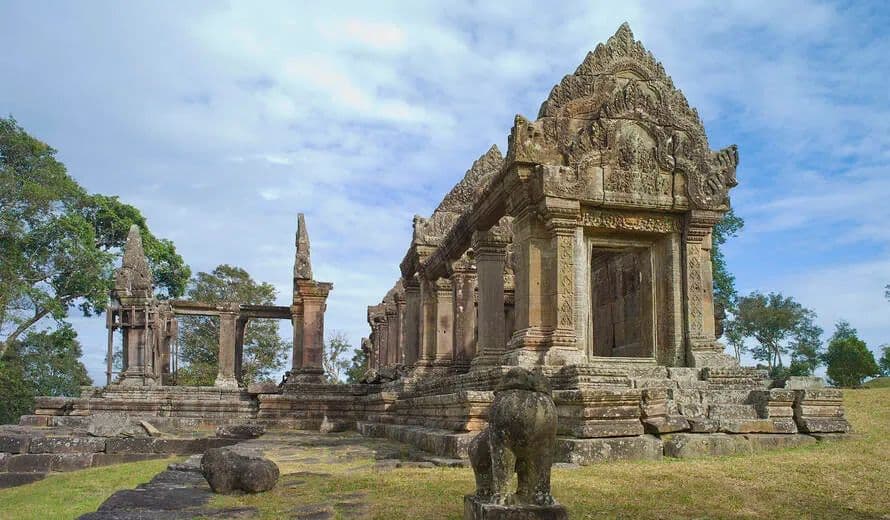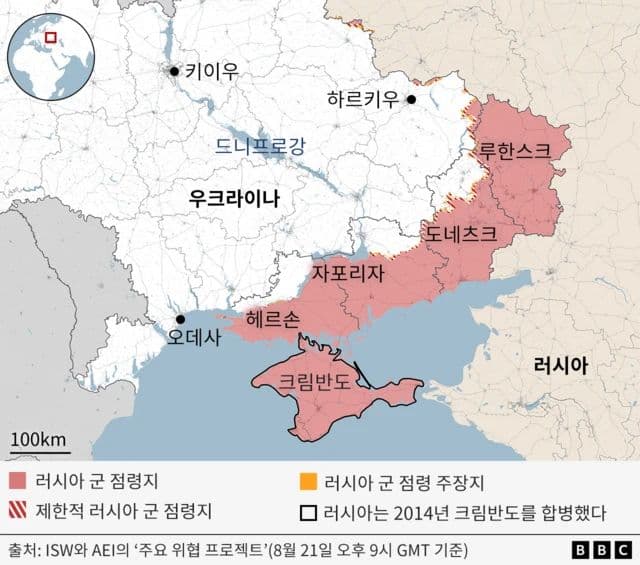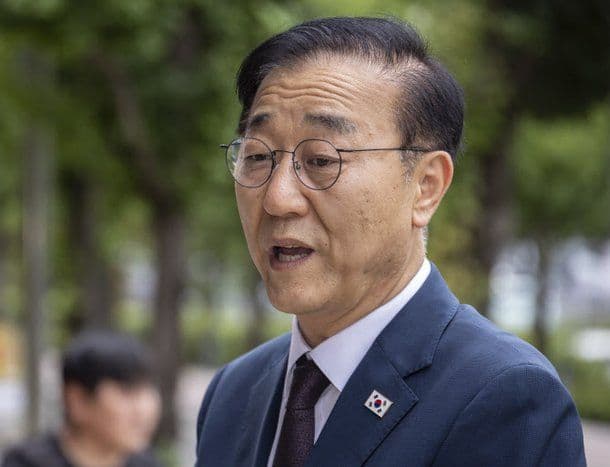Why Are Thailand and Cambodia Fighting Over an Ancient Temple?

A Sacred Temple Becomes a Battlefield
Have you ever heard of a thousand-year-old temple causing a modern war? Welcome to the Thailand-Cambodia border conflict, where history, national pride, and a French mapmaking blunder have collided into one of Southeast Asia's most persistent territorial disputes. In July 2025, this simmering tension exploded into the worst military confrontation between the two nations in over a decade, leaving at least 46 Cambodian soldiers and civilians dead, 16 Thai military personnel killed, and forcing nearly 300,000 people to flee their homes.
At the heart of this conflict sits Preah Vihear temple, a magnificent 9th-century Hindu sanctuary perched dramatically on a 525-meter cliff along the border. Built during the ancient Khmer Empire, the same civilization that created Angkor Wat, this architectural masterpiece has become a symbol of national identity for Cambodia. But Thailand claims it too, and the dispute has turned deadly. On July 24, 2025, after months of rising tensions, Cambodia and Thailand engaged in fierce combat using rocket launchers, artillery, and even F-16 fighter jets. The temple itself sustained significant damage during the shelling, adding cultural tragedy to human loss.
Online communities across both nations have exploded with nationalist fervor. Thai social media users on platforms like Pantip and Twitter have rallied behind their military, with hashtags demanding Thailand defend its sovereignty. Meanwhile, Cambodian netizens on Facebook have shared images of damaged temple structures, accusing Thailand of destroying world heritage. The digital battleground mirrors the physical one, with both sides convinced of their rightful claim.
How a French Map Started a Century of Conflict

To understand why soldiers are dying over ancient stones in 2025, we need to travel back to the early 1900s. When France controlled Indochina, including Cambodia, it signed border treaties with independent Siam, now Thailand, in 1904 and 1907. French surveyors were tasked with mapping the boundary, and here's where things went sideways. The original treaty specified that the border should follow the watershed line of the Dangrek Mountains, which would have placed Preah Vihear on the Thai side. But when French cartographers drew the actual maps, they made what they claimed was a surveying error, placing the temple just inside French-controlled Cambodia.
Here's the kicker: Thailand accepted these maps for decades without objection. It wasn't until 1954, just after Cambodia gained independence, that Thai troops suddenly occupied the temple, claiming it had always been theirs. Cambodia took the case to the International Court of Justice in The Hague, and in 1962, the court ruled decisively in Cambodia's favor. The judges noted that Thailand had accepted the French maps for over 50 years without complaint, using the principle of acquiescence in international law. Thailand was ordered to withdraw its forces immediately.
But the ICJ verdict didn't end the dispute. Thai nationalists argued that the court only awarded the temple structure itself, not the surrounding land or access routes. This ambiguity led to military clashes in 2008 and 2011 that killed over 20 people. International law professor Dr. Pavin Chachavalpongpun from Kyoto University explained to media outlets that the conflict represents deep-seated nationalism in both countries, where the temple has become a symbol of historical grievance that politicians exploit for domestic support.
The 2025 Escalation: From Landmines to Air Strikes
The current crisis began quietly in May 2025 when a Cambodian soldier was killed during a firefight in the Emerald Triangle, a disputed border area where Thailand, Cambodia, and Laos meet. Both nations accused each other of firing first, but tensions didn't explode until July 23, when five Thai soldiers were severely injured by a landmine near the border. Thailand accused Cambodia of planting new mines; Cambodia denied it. The next day, all diplomatic restraint collapsed.
On the morning of July 24, Thai forces reported Cambodian drones surveying the area near Prasat Ta Muen Thom temple, another disputed site about 95 miles from Preah Vihear. According to Thai military statements, six armed Cambodian soldiers approached Thai positions and opened fire around 6:30 AM. Cambodia's Ministry of National Defence countered that Thai forces launched an unprovoked assault to seal off the temple. By 9:40 AM, Cambodia had deployed BM-21 multiple rocket launchers targeting areas near Thai civilian villages. Thailand responded with devastating force: at 10:58 AM, six Royal Thai Air Force F-16 fighter jets bombed Cambodian military positions, destroying command posts of Cambodia's 8th and 9th Infantry Divisions.
The fighting raged across an 800-kilometer stretch of border for five brutal days. Civilian casualties mounted as rockets struck residential areas. Thai authorities evacuated 149,264 people, while Cambodia displaced 134,707 residents from four border provinces. International observers noted the unprecedented intensity, with both nations deploying their most advanced weaponry. The conflict also triggered political turmoil in Thailand, where leaked phone conversations between Prime Minister Paetongtarn Shinawatra and former Cambodian leader Hun Sen led to her removal from office on July 1, accused of being too soft on Cambodia.
International Pressure and an Uncertain Peace
A ceasefire brokered by Malaysia, serving as ASEAN chair, with assistance from China, took effect on July 28 at midnight. Both nations claimed victory and accused each other of violating the truce almost immediately. As of October 2025, the situation remains tense but stable, though sporadic incidents continue. Thailand's new Foreign Minister has set four conditions for substantive talks: withdrawal of heavy weapons from the border, landmine removal, crackdown on online scam operations in border areas, and relocation of Cambodian settlers from disputed Thai territory.
Interestingly, U.S. President Donald Trump has expressed interest in mediating the conflict, reportedly seeking a Nobel Peace Prize after brokering deals in the Middle East. He offered to attend the ASEAN summit in Kuala Lumpur in October 2025 and host a peace signing ceremony between Thailand and Cambodia. However, Thai Prime Minister Anutin has so far declined, insisting on bilateral negotiations without outside interference. Online reactions to Trump's involvement have been mixed, with Thai netizens on Reddit and Twitter expressing skepticism about American intervention in Southeast Asian affairs.
For international observers, this conflict reveals how colonial-era decisions continue to haunt modern nations. The Preah Vihear dispute is not just about a temple; it represents questions of national identity, historical justice, and the limits of international law. Both Thailand and Cambodia have legitimate cultural connections to the Khmer heritage the temple represents, making compromise emotionally difficult. As one popular comment on the Korean community site DC Inside noted when discussing the conflict, Sometimes history leaves wounds that no court can heal, only mutual respect and time. Whether Thailand and Cambodia can find that respect remains to be seen, but for now, the ancient temple on the cliff continues to cast a long shadow over Southeast Asian peace.
Discover More

Why Are Ukrainian Children Being Evacuated From Donetsk's Frontline Villages?
As Russian forces intensify attacks near Ukraine's eastern front, Donetsk authorities order mandatory evacuation of 10 villages with 928 children still in danger zones, while Moscow claims territorial gains as part of buffer zone strategy.

When Betrayal Turns Violent: Wife Armed with Weapon Confronts Husband's Mistress
A 50-year-old woman faced court after breaking into her husband's mistress's apartment with a weapon, destroying property and making death threats. The case reveals complex legal and emotional dimensions of infidelity cases in South Korea.